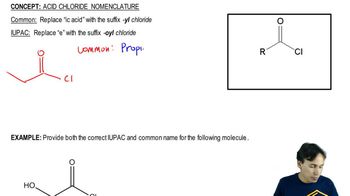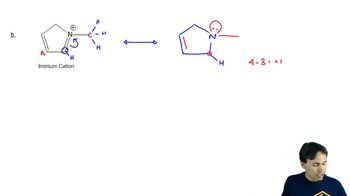Textbook Question
Name the following carboxylic acid derivatives, giving both a common name and an IUPAC name where possible.
(o)
(p)
 Verified step by step guidance
Verified step by step guidance Verified video answer for a similar problem:
Verified video answer for a similar problem:



 3:13m
3:13mMaster Acid Chloride Nomenclature with a bite sized video explanation from Johnny
Start learning